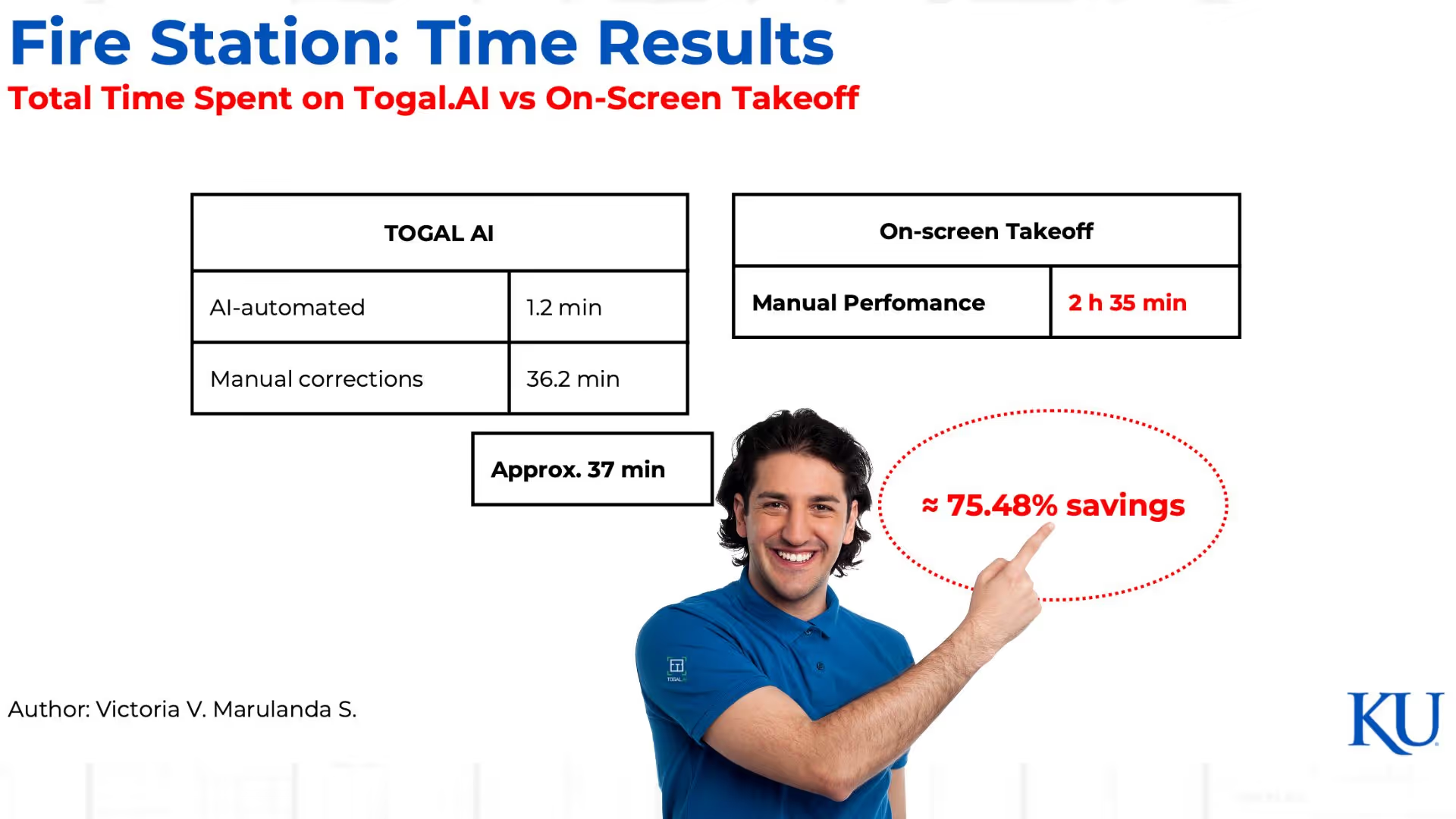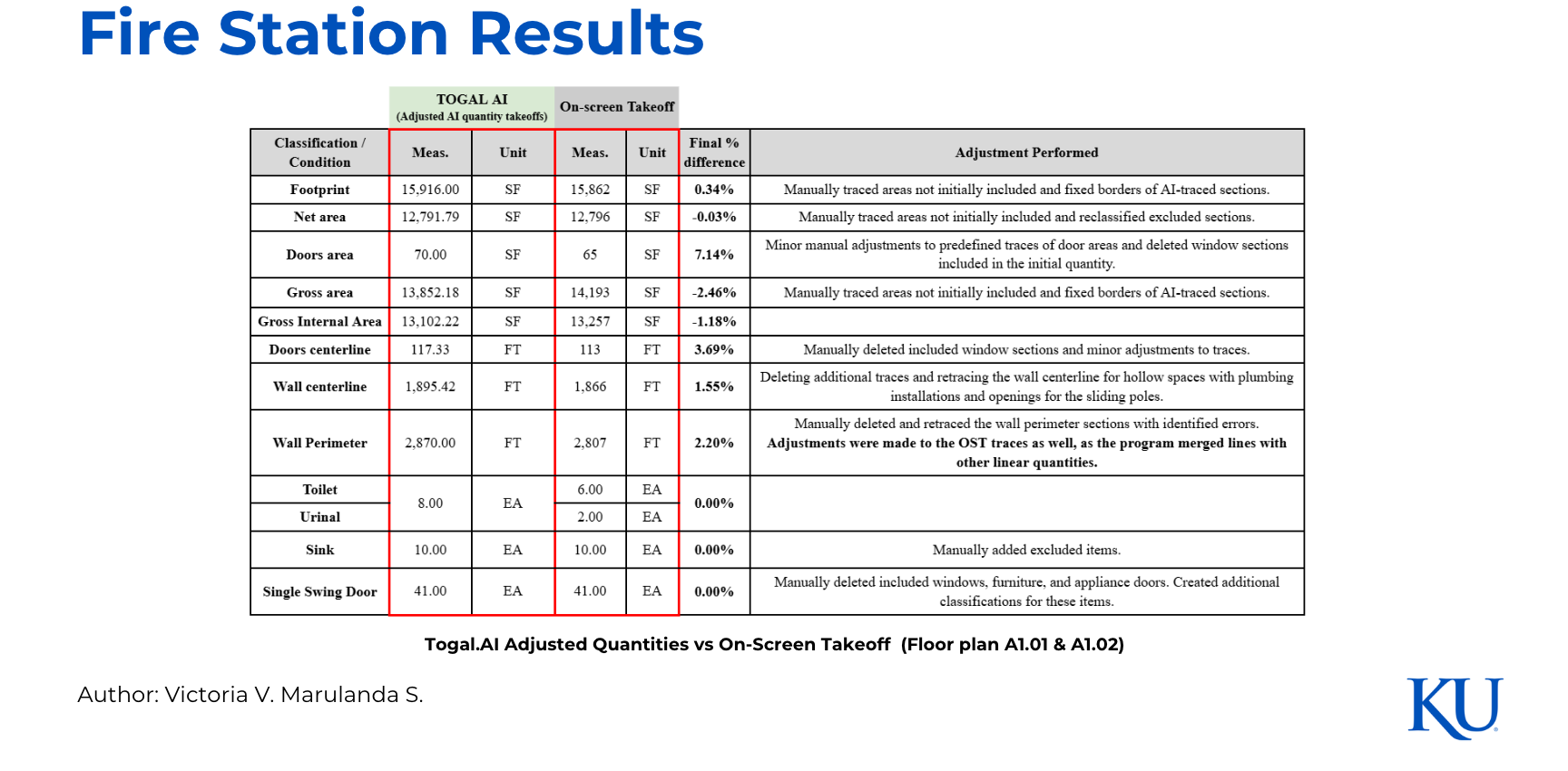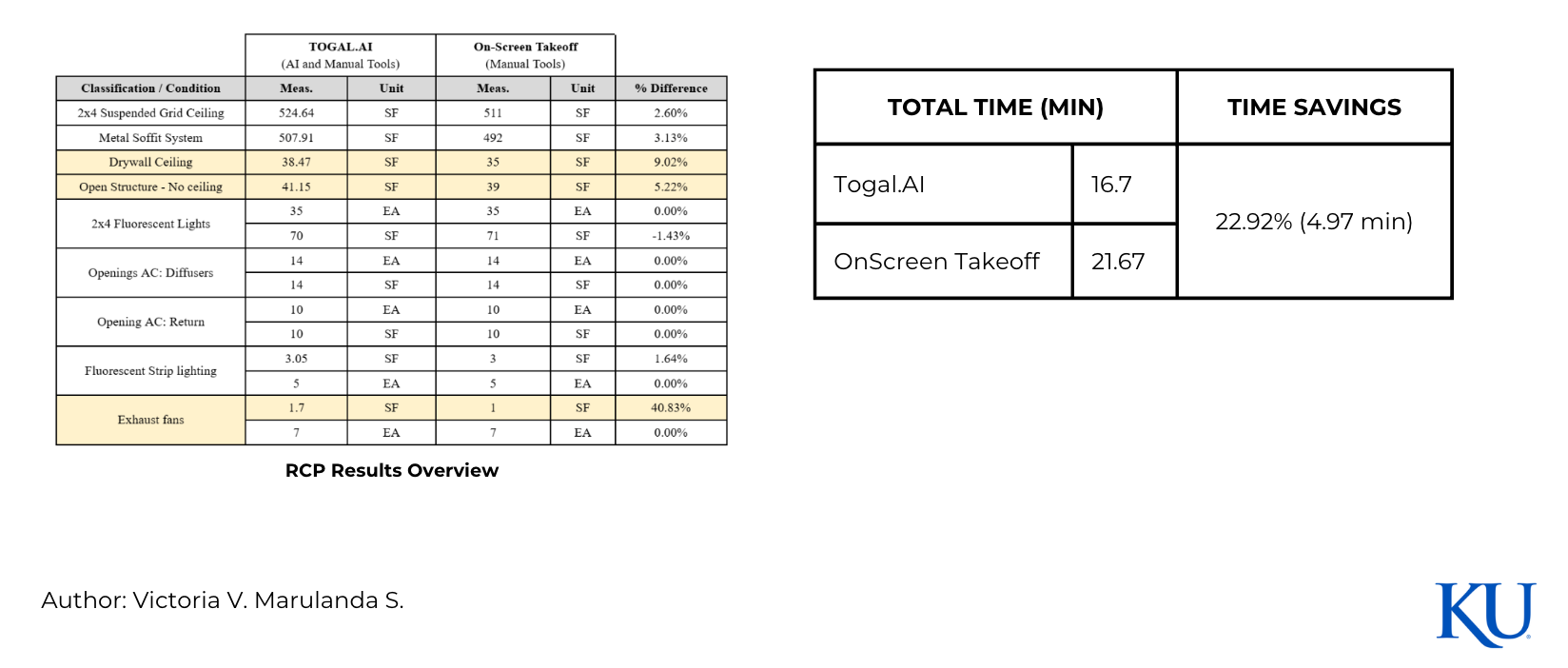University of Kansas Finds Togal.AI 76% faster than OST for takeoff

Academic Research Paper: Togal.AI vs Onscreen Takeoff
Victoria V. Marulanda S. at The University of Kansas' Civil, Environmental & Architectural Engineering (CEAE) Department and Master of Architectural Engineering (ARCE) Program ran a blind comparative analysis between Togal.AI and On-Screen Takeoff focused on time efficiency and accuracy.
Executive Summary
This research compares the time efficiency and accuracy of two estimation and takeoff software programs: Togal.AI, an AI-powered estimation tool, and On-Screen Takeoff (OST), a traditional computer-assisted program. Findings for the Fire Station case study showed up to 76% time savingswith Togal.AI while maintaining a percentage difference within 5% compared to the On-ScreenTakeoff results, with minimal discrepancies in smaller quantities. This study aims to advocate for human-AI collaboration by suggesting the integration of such tools into academic and industrial practices to enhance productivity and accuracy in combination with human judgment.
Methodology Overview
- Researcher was a first-time user of both softwares.
- Performed QTO of architectural floor plans from a clear drawing set (Fire Station) and an RCP floorplan, as a Control Case.
- Recorded time for AI raw takeoffs on each floor plan using Togal.AI.
- Reviewed and identified inaccuracies in the AI-generated takeoffs.
- Conducted manual quantity takeoffs for each category identified by Togal.AI using On-ScreenTakeoff, recording completion times.
- Compared the results for accuracy and time efficiency.
- Recorded the time required to make manual adjustments within Togal.AI.
- Compared the total time spent using each program.
Fire Station Results
- Most adjustments performed on Togal.AI in <5 min.
- Most adjusted quantities are within 5% error margin.
- Common AI inconsistencies include missed projections, confusing annotations, and the inclusionof unrelated elements.


Control Case (RCP)
- Goal: Account for potential time and accuracy improvements caused by the learning curve from reviewing the floor plans in one software before the other.
- Account for learning-related advantages.
- Time savings: ~23% AI was less effective due to the complexity of the floor plan and classification limitations.
- Manual features were used in both programs to perform takeoffs of the different types of ceilings, with minor time advantages in Togal.AI.

Control Case (RCP) Results
The total time in minutes the Control Case (RCP) took in Togal.AI was 16.7 minutes, and 21.67 minutes to do the same tasks in Onscreen, resulting in a 22% time savings using Togal.AI.

Research Discussion Highlights: Togal vs. OST
- Significant time savings (~76%) shown in the Fire Station case study when using Togal.AI.
- AI features: AI-automated area and linear tracing by spaces, item counting, automatic scale detection, merge, subtract, and search functions enable significant time savings.
- AI-generated quantities serve as a starting point for further estimations, as shown in the Control Case of this study.
- Accuracy was reduced to below 5% for almost all of the classifications between programs.
- For quantities reporting a value above 5%, the unit difference remained minimal.

Conclusion
The Togal.AI offers substantial time savings as it allows the integration of AI features, combined with manual review. AI tools and features must be accompanied by professional expertise and human oversight, which is critical. A combination of both leads to optimal efficiency and accuracy. Tool selection may vary based on project type and user preference.Manual tools are similar between the two software programs.Future adoption depends on training professionals in AI-assisted tools, focusing on the ethical and proficient use of these. AI tools should be viewed as assistants, not replacements.Further testing on different drawing types and newer software versions (OST) is recommended.
